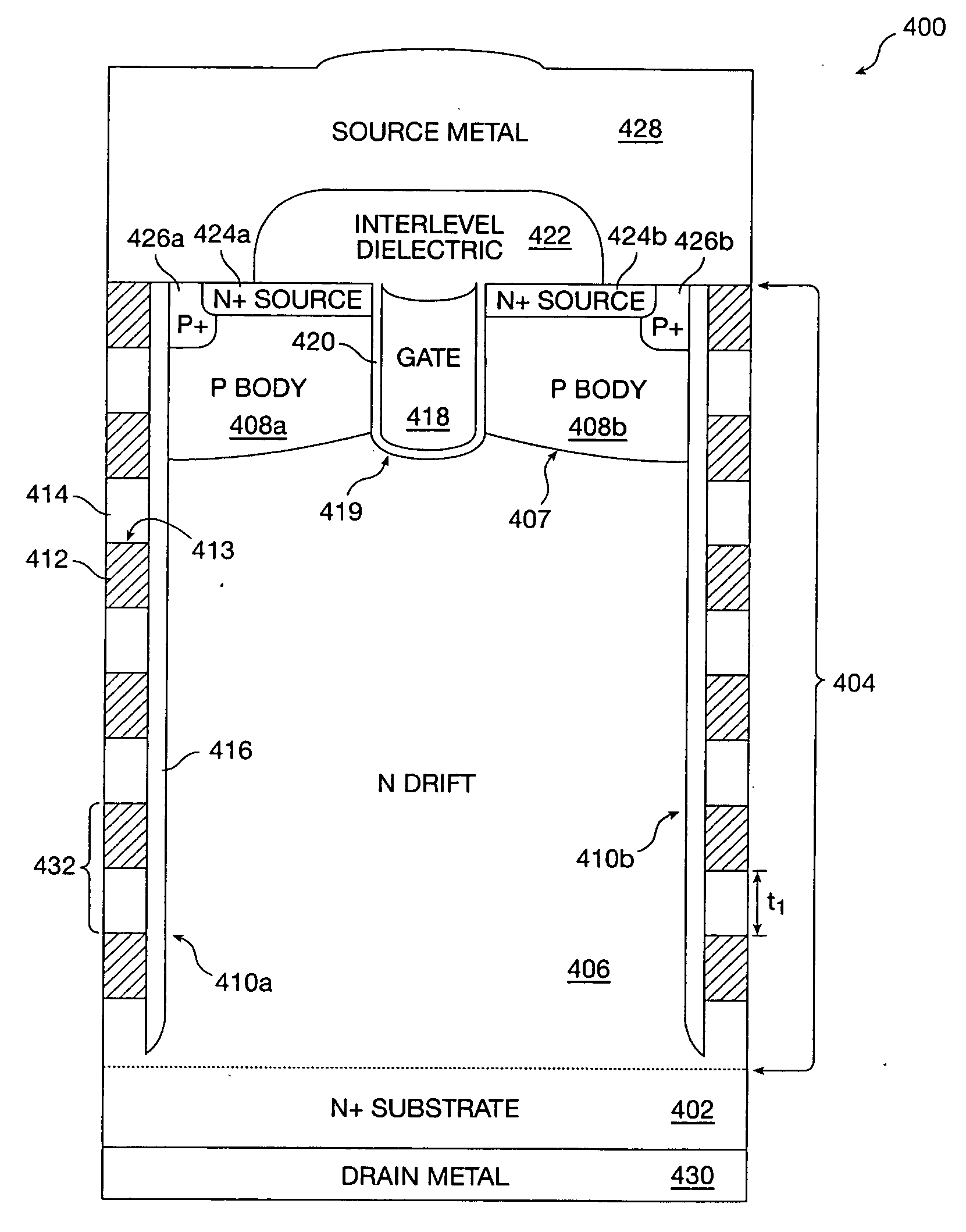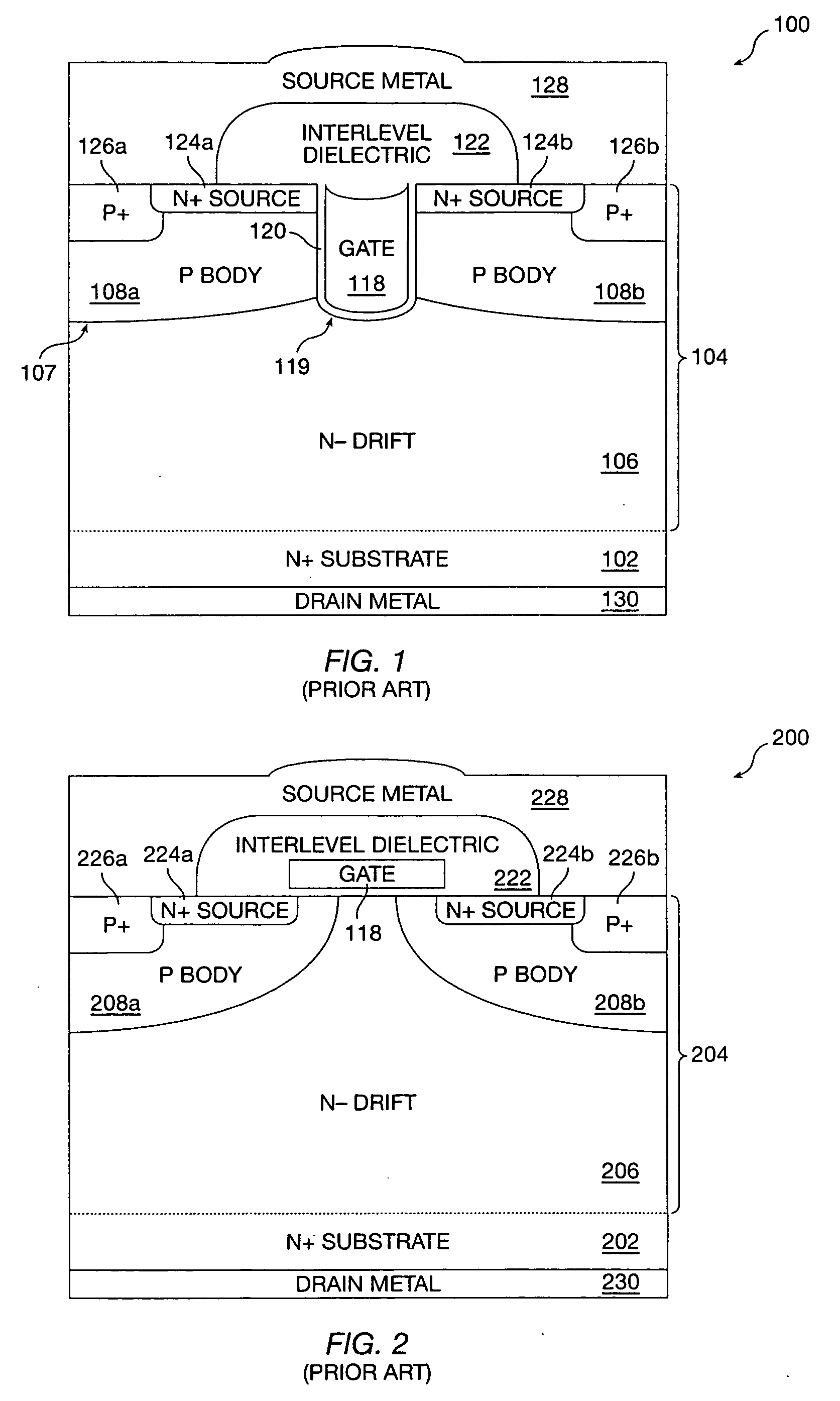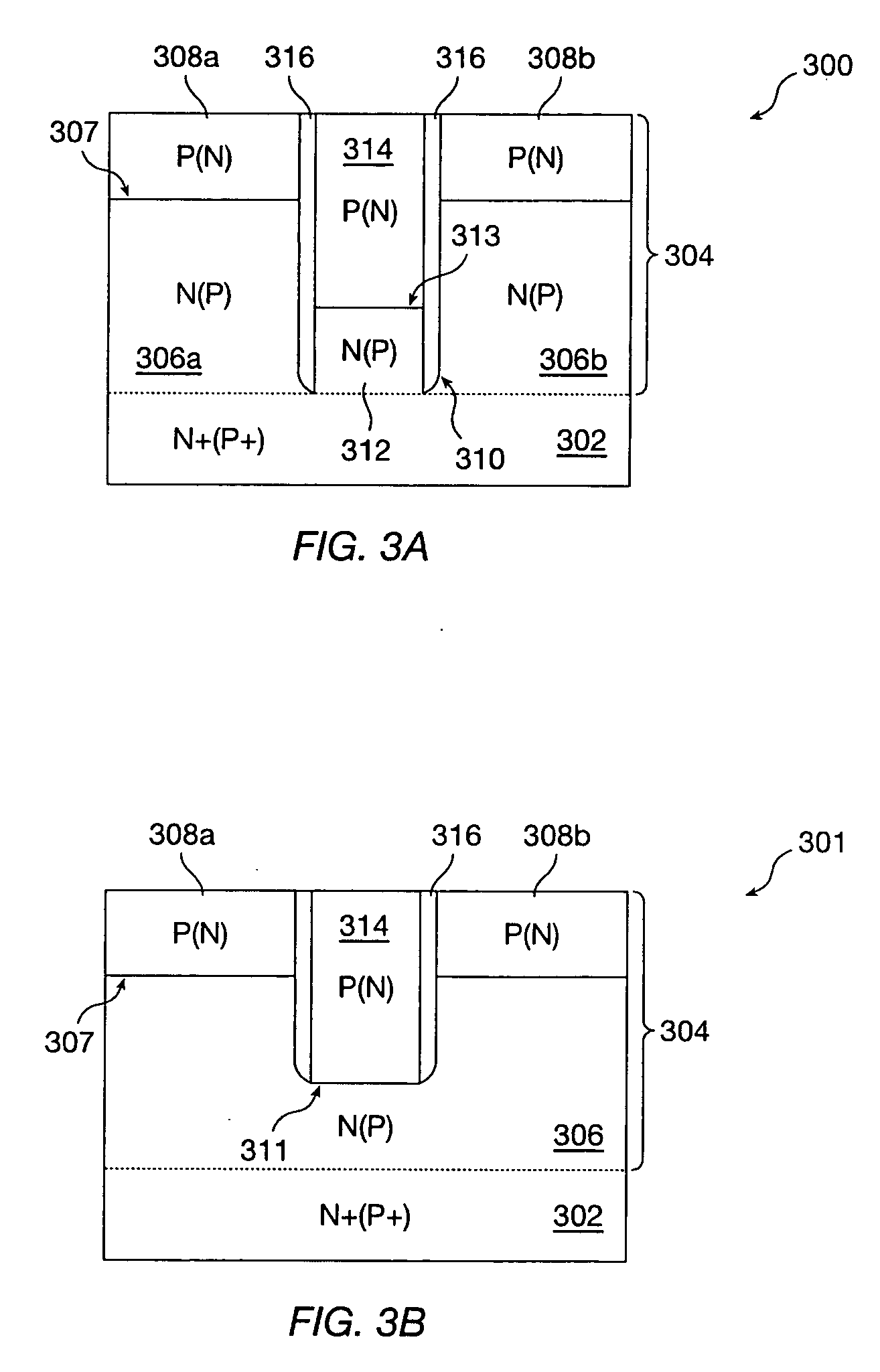Method of forming a trench structure having one or more diodes embedded therein adjacent a PN junction
a trench structure and diode technology, applied in the direction of diodes, semiconductor devices, electrical equipment, etc., can solve the problems of high power loss, primarily power loss, and high density, and achieve the effect of increasing the blocking voltage of the semiconductor structur
- Summary
- Abstract
- Description
- Claims
- Application Information
AI Technical Summary
Benefits of technology
Problems solved by technology
Method used
Image
Examples
Embodiment Construction
[0020] Embodiments of a trench having one or more diodes embedded therein and methods of forming the same are described in accordance with the invention. The diode trench structure can be used in semiconductor devices required to withstand high voltages. The diode trench helps achieve high current capability, high breakdown voltage, low forward voltage drop, and a small cell pitch.
[0021]FIG. 3A shows a cross-section view of a semiconductor structure 300 having a trench 310 in accordance with one embodiment of the present invention. An epitaxial layer 304 is formed over and is of the same conductivity type as a substrate 302. Regions 308a,b of opposite conductivity type to epitaxial layer 304 is formed along a top portion of epitaxial layer 304. Trench 310 extends from a top surface of epitaxial layer 304 through to substrate 310. Trench 310 may alternatively be terminated at a shallower depth (i.e., within regions 306a,b of epitaxial layer 304.) Trench 310 includes a diode made up ...
PUM
 Login to View More
Login to View More Abstract
Description
Claims
Application Information
 Login to View More
Login to View More - R&D
- Intellectual Property
- Life Sciences
- Materials
- Tech Scout
- Unparalleled Data Quality
- Higher Quality Content
- 60% Fewer Hallucinations
Browse by: Latest US Patents, China's latest patents, Technical Efficacy Thesaurus, Application Domain, Technology Topic, Popular Technical Reports.
© 2025 PatSnap. All rights reserved.Legal|Privacy policy|Modern Slavery Act Transparency Statement|Sitemap|About US| Contact US: help@patsnap.com



